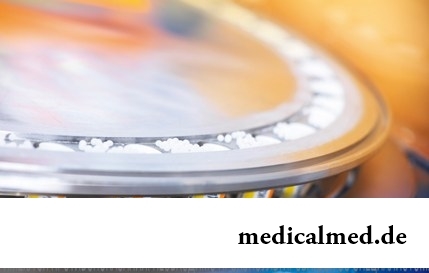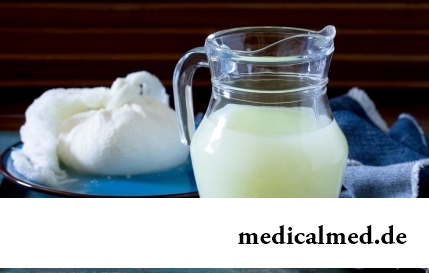





Kseloda
Application instruction:
 Kseloda – medicine with antineoplastic action.
Kseloda – medicine with antineoplastic action.
Form of release and structure
Kseloda is issued in the form of tablets, film coated: oblong, biconvex, the engraving of "XELODA" is applied on one of the parties; on 150 mg – light - milk-pink (light-peach) color, an engraving on the other side of a tablet – "150"; on 500 mg – milk-pink (peach) color, an engraving on the other side of a tablet – "500" (in blisters on 10 pieces, on 6 or 12 blisters in a cardboard pack; in polyethylene bottles on 60 or 120 pieces, on 1 bottle in a cardboard pack).
Is a part of 1 tablet:
- Active ingredient: капецитабин – 150 or 500 mg;
- Auxiliary components (150/500 mg respectively): magnesium stearate – 2,7/9 mg, lactose – 15,6/52 mg, microcrystallic cellulose – 7,2/24 mg, a gipromelloza (3 мПа.с) – 4,5/15 mg, croscarmellose sodium – 6/20 mg;
- Cover (150/500 mg respectively): Opadry pink 03A14309/Opadry pink 03A14309 (talc, a gipromelloz (6 мПа.с), titanium dioxide (E171), dye iron oxide yellow (E172), dye iron oxide red (E172)) – 8,5/18 mg.
Indications to use
- Breast cancer (metastatic or locally-spread): monotherapy of cancer showing resistance to chemotherapy taxons or medicines of an anthracycline row or in case of existence of contraindications to their use; the combined treatment with dotsetaksely at inefficiency of the chemotherapy including medicine of an anthracycline row;
- Carcinoma of the stomach: therapy of the first line of a widespread carcinoma of the stomach;
- Colorectal cancer: therapy of a metastatic colorectal cancer; adjuvant cancer therapy of a large intestine of the III stage after surgical intervention.
Contraindications
Absolute:
- The diagnosed deficit of DPD (dehydrogenase dihydropyrimidine);
- Initial maintenance of thrombocytes <100 × 109/l and/or neutrophils <1,5 × 109/l;
- Heavy renal failure (at clearance of creatinine it is lower than 30 ml in a minute);
- Existence of contraindications to one of medicines as a part of the combined treatment;
- Simultaneous use with sorivudiny and its structural analogs like brivudin;
- Pregnancy and period of a lactation;
- Children's age (for this group of patients data on safety and efficiency of use of Kseloda are absent);
- Hypersensitivity to a ftoruratsil or existence of anamnestic data on development of unexpected or heavy side effects at treatment by derivatives of a ftorpirimidin;
- Hypersensitivity to drug components.
Relative (Kseloda is appointed with care):
- Coronary heart disease;
- Renal failure of moderate severity;
- Liver failure;
- Lactose intolerance, hereditary deficit of lactase, glyukozo-galaktozny malabsorption;
- Combined use with peroral anticoagulants of a coumarinic row;
- Age of 60 years.
Route of administration and dosage
Kseloda should be accepted inside, washing down with water, it is preferable – not later, than in half an hour after meal.
When performing monotherapy of a colorectal cancer, breast cancer and colon cancer of Kselodu usually appoint 2 times a day (in morning and evening) 1250 mg/sq.m (2500 mg/sq.m a day). 14 days of administration of drug alternate to a 7-day break.
Along with other drugs appoint the following mode of dosing:
- Breast cancer: 2 times a day on 1250 mg/sq.m (14 days of administration of drug alternate to a 7-day break) along with dotsetaksely (intravenous infusion within 1 hour of 75 mg/sq.m of 1 times in 21 days). Before introduction of a dotsetaksel carrying out premedication is shown;
- Colorectal cancer and carcinoma of the stomach: 2 times a day on 800-1000 mg/sq.m within 14 days with the subsequent 7-day break, or are continuous on 625 mg/sq.m 2 times a day. Use of immunobiological medicines does not render on Kseloda's dose of influence. Before introduction of an oksaliplatin and Cisplatinum appoint premedication and antiemetic drugs for ensuring adequate hydration. The recommended duration of a course of adjuvant therapy of a colon cancer of the III stage makes 6 months (8 courses).
The recommended schemes of use of Kseloda as a part of the combined treatment:
- Combination with Cisplatinum: Kseloda – 2 times a day on 1000 mg/sq.m (14 days of administration of drug alternate to a 7-day break), appoint the first dose in the evening in the first day of a cycle of therapy, the last – in the morning to the fifteenth day. Cisplatinum – 1 time in 21 days on 80 mg/sq.m in the form of intravenous infusion within 2 hours, the first infusion is carried out in the first day of a cycle;
- Combination with bevatsizumaby and/or oksaliplatiny: Kseloda – 2 times a day on 1000 mg/sq.m (14 days of administration of drug alternate to a 7-day break), appoint the first dose in the evening in the first day of a cycle of therapy, the last – in the morning to the fifteenth day. Bevatsizumab – 1 time in 21 days on 7,5 mg/kg in the form of intravenous infusion within 30-90 minutes, the first infusion is carried out in the first day of a cycle. Oksaliplatin – 130 mg/sq.m in the form of intravenous infusion within 2 hours, administer the drug after a bevatsizumab;
- Combination with epirubitsiny and platinum drug: Kseloda – 2 times a day on 625 mg/sq.m are continuous. Epirubitsin – 1 time in 21 days on 50 mg/sq.m intravenously bolyusno, since first day of a cycle. Platinum drug – 1 time in 21 days of 130 mg/sq.m of an oksaliplatin or 60 mg/sq.m of Cisplatinum in the form of intravenous infusion within 2 hours, the first dose is appointed in the first day of a cycle;
- Combination with irinotekany: Kseloda – 2 times a day on 1000 mg/sq.m (14 days of administration of drug alternate to a 7-day break). Irinotekan – 1 time in 21 days on 250 mg/sq.m in the form of intravenous infusion within 30 minutes, the first infusion is appointed in the first day of a cycle;
- Combination with bevatsizumaby and irinotekany: Kseloda – 2 times a day on 800 mg/sq.m (14 days of administration of drug alternate to a 7-day break). Irinotekan – 1 time in 21 days on 200 mg/sq.m in the form of intravenous infusion within 30 minutes, the first infusion is appointed in the first day of a cycle. Bevatsizumab – 1 time in 21 days on 7,5 mg/kg in the form of intravenous infusion within 30-90 minutes, the first infusion is appointed in the first day of a cycle.
Toxic action of Kseloda can be eliminated with carrying out a symptomatic treatment and/or dose adjustment of drug (having interrupted a course or having lowered a dose). After a dose decline it is impossible to increase it further.
In cases when the toxic effect does not pose a serious threat for the patient's life, therapy can be continued in an initial dose or without interruption of a course (therapy interrupt 2 and 3 degrees at toxicity). At disappearance of symptoms of toxicity, or its reduction to 1 degree, treatment by drug can be resumed in a full dose or to carry out its correction.
At emergence of signs of toxicity 4 degrees therapy need to be cancelled or to temporarily interrupt before reduction or stopping of symptoms up to 1 degree, then Kseloda's reception can be resumed in 1/2 initial doses.
At development of the undesirable phenomena it is necessary to notify the attending physician on it. At emergence of toxicity of average or heavy severity it is necessary to stop Kseloda's reception immediately.
In case of purpose of the combined treatment at expectation of a delay of use of one of drugs therapy should not be begun.
If when carrying out a combination therapy the toxicity phenomena, not connected, according to the doctor, with Kseloda's reception are observed, carry out correction of the caused disturbance of medicine without change of a dose of Kseloda.
At metastasises in a liver and moderate or easy functional disturbances of a liver change of an initial dose is not required, at the same time such patients need careful observation. Safety and efficiency of use of drug at a heavy liver failure were not studied.
The initial dose is recommended to be lowered to 75% of 1250 mg/sq.m at an initial moderate renal failure (at clearance of creatinine of 30-50 ml a minute). At easy severity of a renal failure (at clearance of creatinine of 51-80 ml a minute) correction of an initial dose should not be carried out.
It is necessary to consider that at advanced and senile age the heavy undesirable phenomena 3 and 4 degrees usually develop more often than at young patients. In this regard patients of this age group need careful observation.
At simultaneous use with dotsetaksely for patients of 60 years 3 and 4 degrees are noted increase in frequency of development of the undesirable phenomena. For this group of patients about 75% are recommended to lower an initial dose of Kseloda (2 times a day on 950 mg/sq.m).
At the combined use with irinotekany the patient aged from 65 years recommends to reduce an initial dose of Kseloda about 800 mg/sq.m 2 times a day.
Side effects
During Kseloda's use development of disturbances from various systems of an organism which are shown with various frequency is possible: ≥1/10 – very often, from ≥1/100 to <1/10 – it is frequent, from ≥1/1000 to <1/100 – infrequently.
Side effects when performing monotherapy:
- Nervous system: often – paresthesias, dizziness (except вертиго), a headache, a food faddism (dysgeusia);
- Hypodermic fabrics and skin: very often – dermatitis, a palmar and bottom syndrome (in the form of hypostasis, paresthesias, a peeling of skin, a hyperemia, blistering); often – a hair loss (full or partial), rash, a xeroderma, a limited dermahemia; perhaps – skin cracks (are presumably connected with Kseloda's reception);
- Alimentary system: very often – abdominal pains, vomiting, diarrhea, nausea, stomatitis (including ulcer); often – pains in epigastric area, a lock, dispepsichesky disturbances;
- Laboratory indicators: often – increase in bilirubin (hyperbilirubinemia);
- Organ of sight: often – a conjunctiva inflammation, the raised slezootdeleniye;
- Metabolism and food: very often – anorexia; often – a loss of appetite, dehydration;
- General disturbances: very often – drowsiness, fatigue; often – weakness, fever, an adynamy.
The disturbances connected with toxicity manifestations (there is, at least, an indirect communication between development of such side effects and Kseloda's use):
- Cardiovascular system: cardialgias (including stenocardia), hypostases of the lower extremities, tachycardia, a cardiomyopathy, a myocardial infarction, myocardium ischemia, heart failure, supraventricular arrhythmias (including fibrillation of auricles, ventricular extrasystoles), sudden death;
- Alimentary system: dryness in a mouth, the meteorism, disturbances connected with an ulceration/inflammation of mucous membranes (in the form of gastritis, an esophagitis, colitis, a duodenitis, gastrointestinal bleedings);
- Respiratory system: cough, short wind;
- Nervous system: sleeplessness, taste disturbance, encephalopathy, confusion of consciousness, symptoms of cerebellar disturbances (in the form of an ataxy, a dysarthtia, a lack of coordination and balance);
- Connecting fabric and musculoskeletal system: mialgiya, joint pains (one or several) and to back;
- Mentality: depression;
- Organ of sight: irritation of eyes;
- Hypodermic fabrics and skin: reactions of a photosensitization, change of nails, a focal peeling of skin, an itch, the strengthened xanthopathy, the syndrome similar to beam dermatitis;
- Lymphatic system and blood: low maintenance of all uniform elements of blood, anemia, miyelosupressiya;
- Parasitic and infectious diseases: the infectious complications connected with a miyelosupressiya, disturbances of integrity of mucous membranes and/or easing of immunity in the form of local and fatal system infections (a bacterial, fungal or virus etiology) and sepsis;
- General disturbances: the increased drowsiness, an adynamy, extremity pains, a stethalgia (not cardial etiology).
At Kseloda's use along with other drugs the safety profile at appointment according to various indications and in various combinations did not differ, however in this case the disturbances characteristic of monotherapy can develop more often.
Some side effects are often observed when carrying out chemotherapy (for example, peripheral touch neuropathy at use of a dotsetaksel or oksaliplatin, increase in arterial pressure at therapy bevatsizumaby), but at Kseloda's reception it is impossible to exclude their deteriorations.
When performing the combined treatment the following disturbances in addition to those can develop at monotherapy:
- Nervous system: very often – a dizesteziya, a peripheral touch neuropathy, a peripheral neuropathy;
- Respiratory system: very often – a pharyngalgia, a perversion of sensitivity of a throat; often – a dysphonia, nasal bleeding, a rhinorrhea;
- Cardiovascular system: very often – embolism/thrombosis, increase in arterial pressure;
- Connecting fabric and musculoskeletal system: very often – gnathalgias;
- Lymphatic system and blood: very often – a febrile neutropenia, a leukopenia;
- Food and metabolism: very often – decrease in body weight;
- Parasitic and infectious diseases: often – candidiasis of an oral cavity;
- General disturbances: very often – temperature intolerance; often – pain, fever.
When carrying out clinical and post-market researches cases of cholestatic hepatitis and liver failure were registered (relationship of cause and effect is not established with performing therapy by Kseloda).
During performing the combined treatment with other chemotherapeutic drugs it was reported about frequent development of a heart attack of myocardium/ischemia and reactions of hypersensitivity.
Changes of laboratory indicators at Kseloda's use are shown as a hyperbilirubinemia, a hypopotassemia, a hyponatremia, a hyperglycemia, a giperkreatininemiya, гипер-/a hypocalcemia, decrease in hemoglobin, reduction of number of neutrophils, granulocytes, thrombocytes, lymphocytes, increase in activity of alaninaminotranspherase, aspartate aminotransferase, an alkaline phosphatase.
During post-marketing use of Kseloda not specified stenosis of the lacrimal tubule was seldom or never recorded. With the same frequency in clinical and post-market researches cases of cholestatic hepatitis and liver failure were registered.
Special instructions
During therapy it is necessary to exercise careful control of patients of toxicity manifestations.
The majority of disturbances have reversible character and do not demand full cancellation of Kseloda though dose adjustment or temporary drug withdrawal can be required.
At treatment development of diarrhea, sometimes heavy is possible. Patients with heavy diarrhea need to be observed carefully, and at development of dehydration it is necessary to carry out a regidratation and to compensate loss of electrolytes. On medical indications it is necessary to appoint standard antidiarrheal medicines as soon as possible. In case of need the dose of drug needs to be lowered.
Dehydration it is necessary to eliminate or warn at the very beginning of emergence. It can quickly develop against the background of anorexia, an adynamy, nausea, vomiting or diarrhea. At dehydration 2 degrees need to be interrupted immediately therapy above and to carry out a regidratation. Before its end and correction or elimination of factors which led to its development administration of drug cannot be resumed.
The range of cardiotoxicity of Kseloda includes heart failure, stenocardia, a myocardial infarction, a cardiac standstill, arrhythmias and changes on the electrocardiogram. These disturbances at patients with coronary heart disease in the anamnesis are most characteristic.
The palmar and bottom syndrome can be manifestation of skin toxicity. At its development to 2 or 3 degrees therapy needs to be interrupted before disappearance of symptoms or their reduction to 1 degree. At development of a syndrome 3 degrees the subsequent doses of Kseloda have to be lowered. B6 vitamin (pyridoxine) is not recommended to be applied to symptomatic or secondary preventive therapy of a palmar and bottom syndrome.
Kseloda can lead to development of a hyperbilirubinemia. Treatment should be interrupted at a hyperbilirubinemia> 3 × UBN (upper bound of norm) or increase in activity of hepatic aminotransferases (alaninaminotranspherase, aspartate aminotransferase)> 2,5 × VGN.
It is possible to resume therapy at lowering of the level of bilirubin and activity of hepatic aminotransferases below the specified limits.
Kseloda has moderate or small influence on ability to manage motor transport and mechanisms. It is necessary to consider that during therapy such undesirable phenomena as dizziness, nausea or weakness can develop.
Medicinal interaction
At co-administration of Kseloda with some drugs there can be following effects:
- Anticoagulants of a coumarinic row: disturbances of indicators of coagulation and/or bleeding during therapy or after its termination (it is necessary to control carefully indicators of coagulation and depending on them to adjust anticoagulant doses);
- P450 cytochrome substrates: the combination was not investigated, at joint appointment it is necessary to be careful;
- Antacids: increase in concentration of a kapetsitabin and one of metabolites (5 '-DFTsT) in a blood plasma;
- Phenytoinum: increase in its concentration in plasma;
- Sorivudin and his analogs: fatal strengthening of toxicity of a kapetsitabin (the combination is not recommended; Kselodu can appoint in 4 days after the end of therapy sorivudiny or its structural analogs);
- Leykovorin (calcium фолинат): strengthening of toxic action of a kapetsitabin.
Terms and storage conditions
To store in the place, unavailable to children, at a temperature up to 30 °C.
Period of validity – 3 years.
Name of drug
Price
Drugstore
Kseloda тбл п / about 150 mg No. 60, Ф.ХоффманнЛяРошЛтд / Hoffmann la Roche Ink
3139 rub.
 Network of the Moscow drugstores of IFC
Network of the Moscow drugstores of IFCMany drugs initially moved ahead in the market as drugs. Heroin, for example, was initially brought to the market as children's cough medicine. And cocaine was recommended by doctors as anesthesia and as the means increasing endurance.

Cellulitis - very widespread cosmetic shortcoming which arises approximately at 80% of women sooner or later. Emergence ег...
Section: Articles about health
The body of the person almost for 60% consists of water. It is so important for normal functioning of an organism that loss of only one and a half percent of liquid already leads to the most unpleasant effects. The problems connected with deficit of water can overtake and...
Section: Articles about health
Coffee – favourite drink of many. For the last decades it more than once already declared very harmful, extremely useful and even necessary for normal life activity. In spite of the fact that this product became for us usual for a long time, there are many myths about properties of coffee and its impact on a human body. Readers can get acquainted with the most widespread of similar delusions today....
Section: Articles about health
A little more than a century ago goat milk was a traditional food stuff of most of Russians. Unfortunately, today on tables...
Section: Articles about health
For the help to doctors in the choice of optimal solutions for treatment of various diseases the Cochrane scientific organization (Cochrane) conducts joint researches with representatives of scientific community around the world. The analysis of a series became carried out by one of the last methanolyses...
Section: Articles about health
Any of us is not insured from a heavy illness of the loved one. Happens and so that someone from family members becomes the bed patient, and remains in such state for a long time. It extremely suppresses both the most injured, and all its house which life considerably changes....
Section: Articles about health
Reactive pancreatitis - the disease which is characterized by inflammatory process in a pancreas which arises more often everything...
Section: Articles about health
Striya (extension) are the defects of skin having an appearance of direct or wavy strips from 1 to 10 cm long and 1-5 mm wide. In most cases at women of a striya are located on a stomach, hips, a breast or buttocks. At athletes they can appear on shoulders and внутренн...
Section: Articles about health
Season of activity of viral infections in the heat. Everyone can get sick, but probability of this unpleasant event it is possible and it is necessary to minimize. There is a number of rules, following to which will help or to avoid absolutely infection with flu or a SARS, or to have an illness benign and without essential complications. About ways of prevention of seasonal infections the speech in this article will also go....
Section: Articles about health
Cold, puffiness of a nose, itch, the watering eyes - characteristic symptoms of the allergic rhinitis resulting from hit and...
Section: Articles about health
Deciding to get rid of an addiction, not all imagine what effects it is necessary to face. Process of refusal of smoking causes quite essential discomfort in most of people: differences of mood, sleep disorder, fatigue, decrease физич...
Section: Articles about health
Dogrose – one of the most widespread adornment and medicinal plants growing practically in all territory of our country. To most of Russians it is a beautiful bush it is known, first of all, as a source of fruits, extremely vitamin-rich. However curative properties of a dogrose are not limited to it at all. About how still it is possible to use a plant in the medical purposes, we will tell today....
Section: Articles about health
Today about 30 diseases, sexually transmitted are known. To wide circulation of these illnesses extremely with...
Section: Articles about health
You heard that laughter prolongs life? Researchers did not manage to establish longevity direct link with sincere fun yet, but several facts confirming beneficial influence of risibility on the state of health are clinically proved....
Section: Articles about health
Modern footwear is extremely various. It stopped being only protection for legs long ago. Today shoes, boots, barefoot persons choose not so much proceeding from their convenience and functionality how many being guided by outward, brand and an opportunity to add with them a stylish dress. At the same time, buying footwear, think of its safety a little. Meanwhile, many popular models can do essential harm to health....
Section: Articles about health
To look healthy and means well-groomed not only to be pleasant to people around, but also to feel strong, sure and taken place. To Spa...
Section: Articles about health
Neurosis is called pathology of a nervous system at which deviations in functioning of the highest nervous processes are observed. Most often - owing to yet not strengthened mentality - children are subject to neurosises. Premises to emergence of such disturbances can become нез...
Section: Articles about health
Healthy lifestyle today in fashion, and many parents think of that the child from the early childhood played sports. Trainings will help it to become strong and hardy, will improve coordination of movements, and also will exert positive impact on mentality: it will become more collected and purposeful....
Section: Articles about health
Milk and products of its processing by right occupy one of the main places in a diet of the modern person. They contain necessary...
Section: Articles about health
More than a half of the married couples which faced prostatitis – leave. The new broadcast "Female View of Prostatitis" will help to learn – whether you have or your relatives problems....
Section: Articles about health
Physical activity is necessary for normal functioning of a human body. At a lack of the movement joints cease to function, muscles atrophy, cardiovascular activity is broken and the metabolism worsens. The modern city rhythm of life does not provide the person with an adequate exercise stress, additional - sport is necessary. Tedious tasks the huge number of the people having those or ин exists sport not all to liking, but also...
Section: Articles about health
Coffee - the tonic loved by many for the invigorating aroma and deep taste. Having the stimulating effect, coffee raises ра...
Section: Articles about health
It is possible to find the extensive range of fruit and vegetables in modern shops. Russians already got used that on counters there is not only a seasonal domestic production, but the vegetables and fruit which are grown up in the countries with more comfortable conditions at all seasons of the year...
Section: Articles about health
(Xerostomia) many people consider feeling of a xerostomia small and easily removable inconvenience. This delusion: the symptom can demonstrate existence of serious diseases. It is worth to remember also that saliva performs important functions in an organism: clears the surface of teeth of a food plaque, growth of pathogenic microorganisms oppresses, normalizes acid-base balance, liquefies food and helps to split the carbohydrates which are contained in it. Chronic deficit слюн...
Section: Articles about health
What woman does not dream of a beautiful and thick hair? So far physicians developed difficult schemes on hair transplant, in the bet industry...
Section: Articles about health
You are office worker, the driver, the fan of winter sports or do not think of life without bicycle? You lead a slow-moving life and you move on the city only on the car? You have no constant partner and you do not love the protected sex? Attention! You one...
Section: Articles about health
Cystitis, or inflammation of a mucous membrane of a bladder, this very widespread disease which, owing to some features of a structure of bodies of urinogenital system, women have approximately four times more often than men. Women aged from 20 up to 45 years enter into the main risk group. Cystitis is an illness of a bacterial origin. It can have an acute or chronic current. The second option is dangerous not only a frequent recurrence, серьезн...
Section: Articles about health

